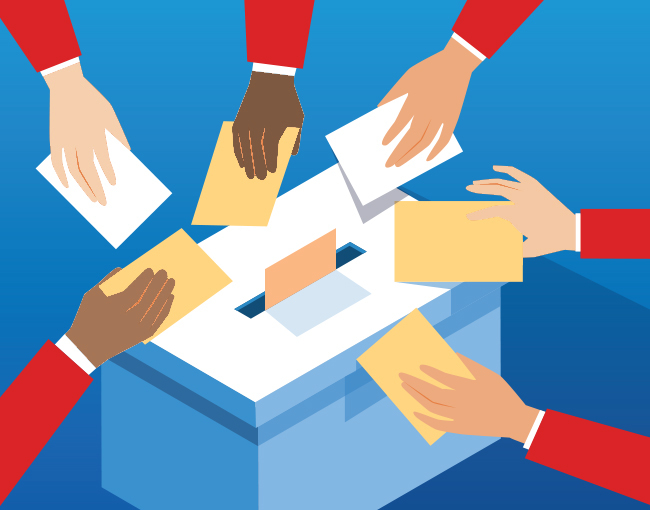The first Tuesday following the first Monday in November designated by federal law to hold general elections.
Can You Hear Me Now?
During the early years of the Republic, state election laws were muddled, and states held elections for the presidency on different days between September and November. An 1845 law directed all states to choose their electors on the same day: "The Tuesday next after the First Monday in November." Tuesday was chosen to allow for time between church on Sunday and market days on Wednesday in the nation's early, agrarian economy. At the time, many states chose their electors either without holding a popular vote or by restricting voting rights to white, land-owning men.
Think Different
Several states began to eliminate restrictions preventing landless whites from voting by the mid-1800s, especially in the newly-formed Western states. In the aftermath of the Civil War, the 15th Amendment forbade states from denying male citizens the right to vote based on "race, color or previous condition of servitude." In response, many Southern states passed Jim Crow laws severely restricting the franchise for African Americans. In 1920, the 19th Amendment enshrined universal suffrage for women.
Despite the steady expansion of voting rights, Jim Crow laws continued to disenfranchise minority voters, and questions of discrimination in voting linger today. The Voting Rights Act of 1965 banned such laws and established federal oversight in certain states. Congress most recently updated the law with an overwhelming majority in 2006. But a controversial 2013 holding by the U.S. Supreme Court eliminated the enforcement mechanism from the Voting Rights Act, which has led to yet further controversy over modifications to state election laws.
Just Do It
In 2012, 58% of the eligible and registered population voted in the presidential election. With turnout typically between 50% and 65% in general elections over the past 100 years, many proposals have been floated through the years to increase participation. (Some disagree that they would work.) Early voting has gained popularity in recent cycles, with about 40% of voters expected to have already cast their ballot by election day this year. In a different attempt to boost turnout, Colorado, Oregon, and Washington have mail-based voting. Despite these recent efforts, even the turnout in 2008 did not eclipse the participation highs of the three elections of the 1960s.
Beyond the presidential election, many other important races and issues are on the ballot this year. Though "split-ticket" voting appears to have reached an all-time low, the fortunes of many down-ballot candidates, particularly for the U.S. Senate, may be determined by the number of voters choosing to stray from the bruised standard bearers of both major parties. Even worse, election officials are concerned about the potential threat of election day cyberattacks.
Today's the day! Please be sure to vote!





